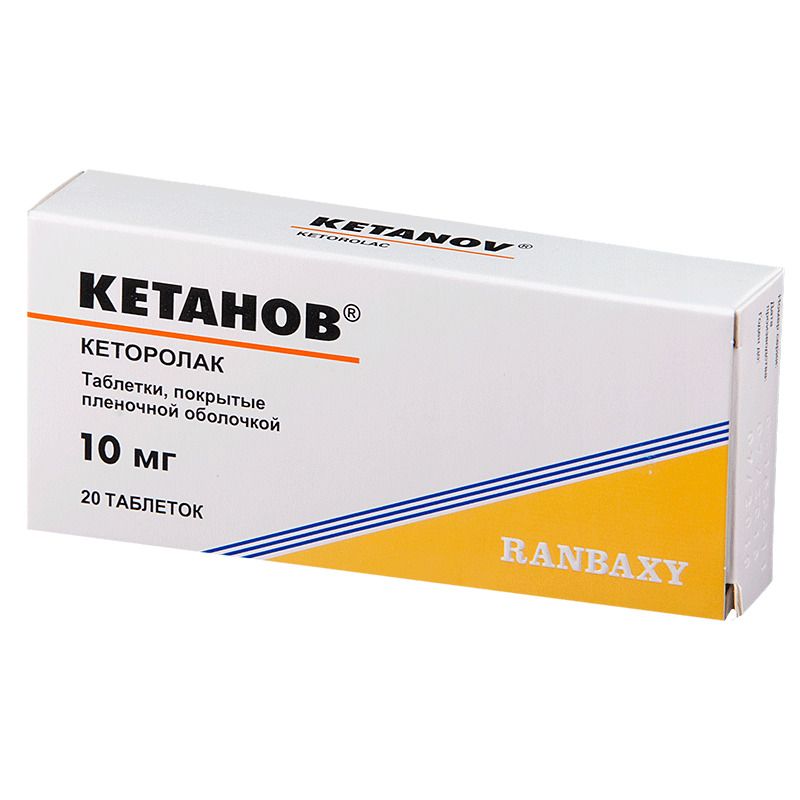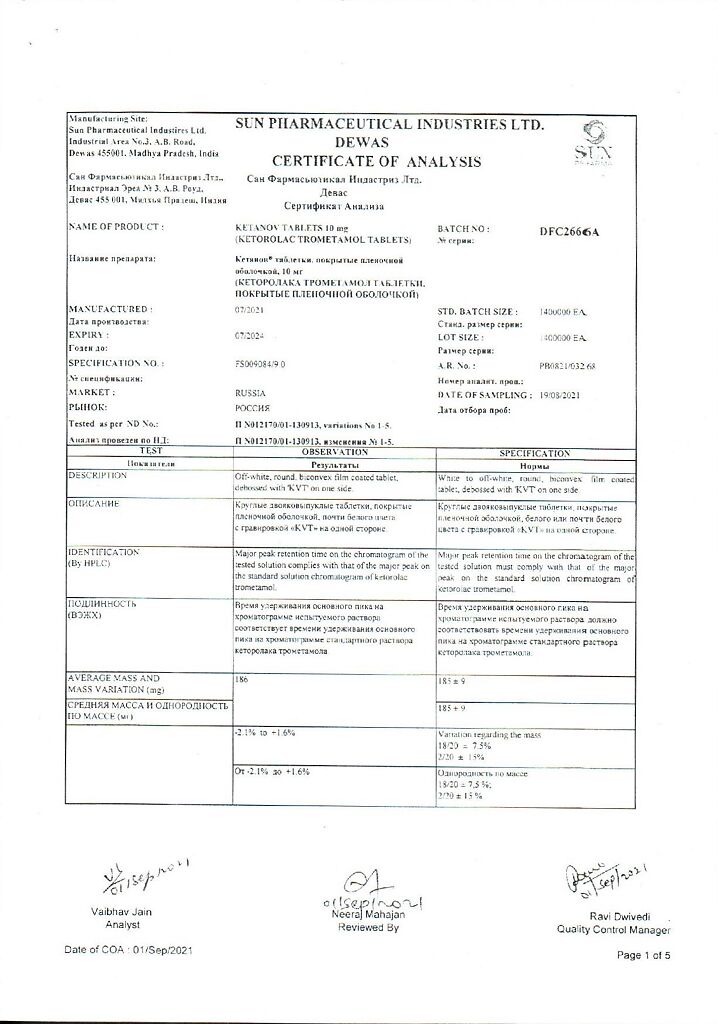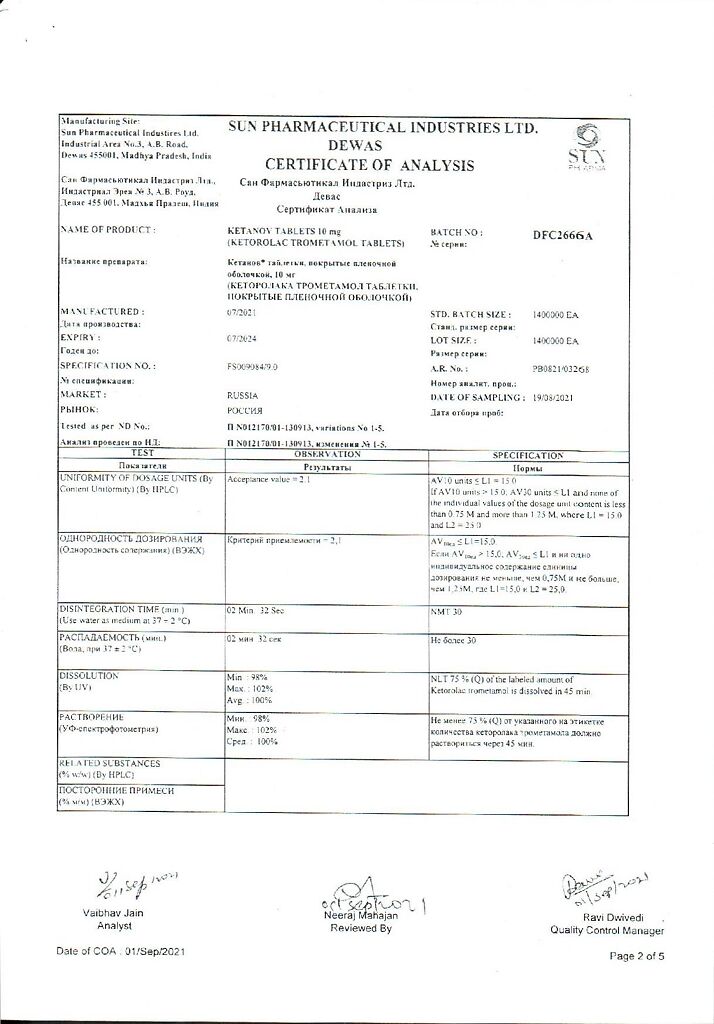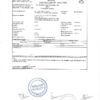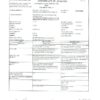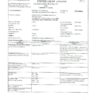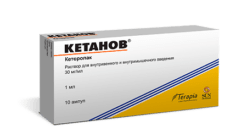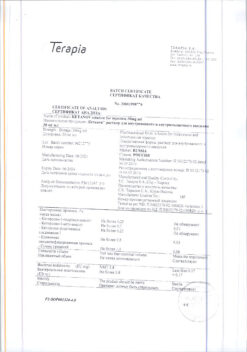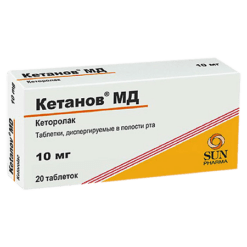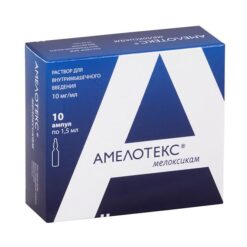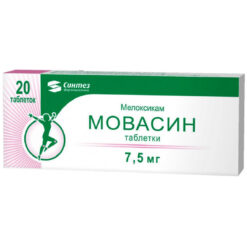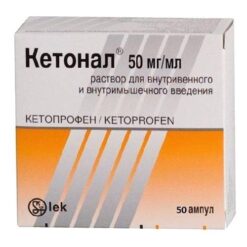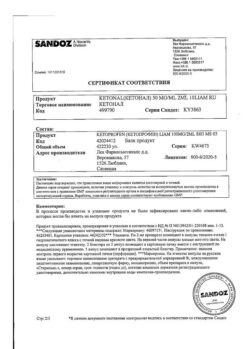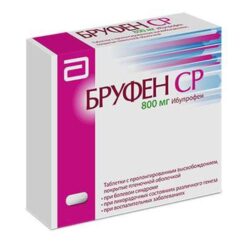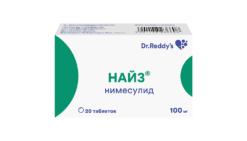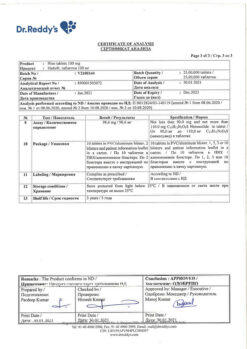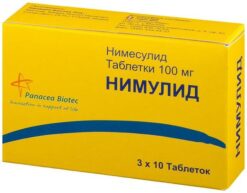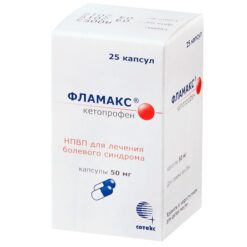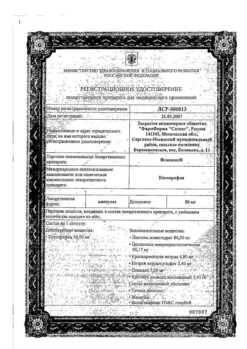No products in the cart.
Ketanov, 10 mg 20 pcs.
€3.12 €2.60
Description
Pharmgroup:
NSAIDs.
Pharmaceutical action:
Ketorolac has a pronounced analgesic effect, also has anti-inflammatory and moderate antipyretic effects.
The mechanism of action is related to non-selective inhibition of COX-1 and -2 enzyme activity, mainly in peripheral tissues, with the consequence of inhibition of PG biosynthesis – modulators of pain sensitivity, thermoregulation and inflammation. Ketorolac is a racemic mixture of [-]S- and [+]R-enantiomers, and the analgesic effect is due to the [-]S form.
The drug Ketanon has no effect on the opioid receptors, does not suppress respiration, does not cause addiction and has no sedative and anxiolytic effects.
In terms of the analgesic effect, it is comparable with morphine and is significantly superior to other NSAIDs.
After intravenous and per oral administration the onset of analgesic effect is noted after 0.5 and 1 hour respectively, the maximum effect is reached after 1-2 hours.
Pharmacokinetics:
After oral administration Ketanov® is well absorbed in the GI tract – Cmax in plasma (0.7-1.1 mcg/ml) is reached 40 min after an empty stomach dose of 10 mg. Fat-rich food decreases the drug Cmax in blood and delays its achievement by 1 h. 99% of the drug is bound to plasma proteins, and in case of hypoalbuminemia the amount of free substance in blood increases. Bioavailability is 80-100%.
Absorption when administered in m/m is complete and rapid. After 30 mg of the drug is administered in the m/m, Cmax is 1.74-3.1 µg/ml, 60 mg – 3.23- 5.77 µg/ml, Tmax is 15-73 and 30-60 min, respectively.
The time to reach equilibrium concentration (CSS) with parenteral and oral administration is 24 h when administered 4 times a day (above subtherapeutic) and is 0.65-1.13 mcg/ml, 1.29-2.47 mcg/ml when administered v/m in 15 mg dose; after 10 mg oral administration – 0.39-0.79 mcg/ml. The volume of distribution is 0.15-0.33 l/kg. In patients with renal insufficiency, the distribution volume of the drug may increase 2-fold and its R-enantiomer by 20%.
Transfers to breast milk: after maternal administration of the first and second dose of ketorolac (10 mg) the Cmax in milk is reached after 2 hours and is 7.3 and 7.9 ng/l, respectively.
More than 50% of the administered dose is metabolized in the liver to form pharmacologically inactive metabolites. The main metabolites are glucuronides, which are excreted by the kidneys, and p-hydroxyketorolac. 91% is excreted by the kidneys, 6% is excreted through the intestine.
The T1/2 in patients with normal renal function is on average 5.3 h (3.5-9.2 h after 30 mg i.v. and 2.4-9 h after 10 mg oral administration). T1/2 is longer in elderly patients and shorter in younger patients. Liver function has no effect on T1/2. In patients with impaired renal function with plasma creatinine concentration of 19-50 mg/l (168-442 μmol/l) T1/2 is 10.3-10.8 h, in more severe renal failure – more than 13.6 h.
The total clearance is 0.023 l/kg/h (0.019 l/kg/h in elderly patients) when administered by injection in 30 mg doses, and 0.025 l/kg/h when administered orally in 10 mg doses; in renal failure with creatinine concentration in blood plasma of 19-50 mg/l, when administered intravenously at a dose of 30 mg – 0.015 l/kg/h, when administered orally at 10 mg – 0.016 l/kg/h.
It is not eliminated during hemodialysis.
Indications
Indications
Pain syndrome of moderate and severe intensity of various origins (including in the postoperative period, with cancer).
Pharmacological effect
Pharmacological effect
Pharmaceutical group:
NSAIDs.
Pharmaceutical action:
Ketorolac has a pronounced analgesic effect and also has anti-inflammatory and moderate antipyretic effects.
The mechanism of action is associated with non-selective inhibition of the activity of the enzyme COX-1 and -2, mainly in peripheral tissues, resulting in inhibition of the biosynthesis of PG – modulators of pain sensitivity, thermoregulation and inflammation. Ketorolac is a racemic mixture of [-]S- and [+]R-enantiomers, and the analgesic effect is due to the [-]S form.
The drug Ketanov does not affect opioid receptors, does not depress respiration, does not cause drug dependence, and does not have a sedative or anxiolytic effect.
The strength of the analgesic effect is comparable to morphine, significantly superior to other NSAIDs.
After intramuscular administration and oral administration, the onset of analgesic action is observed after 0.5 and 1 hour, respectively, the maximum effect is achieved after 1–2 hours.
Pharmacokinetics:
After oral administration, Ketanov® is well absorbed from the gastrointestinal tract—Cmax in blood plasma (0.7–1.1 μg/ml) is achieved 40 minutes after taking a dose of 10 mg on an empty stomach. Food rich in fat reduces the Cmax of the drug in the blood and delays its achievement by 1 hour. 99% of the drug binds to blood plasma proteins, and with hypoalbuminemia the amount of free substance in the blood increases. Bioavailability – 80–100%.
Absorption with intramuscular administration is complete and rapid. After intramuscular administration of 30 mg of the drug, Cmax is 1.74–3.1 μg/ml, 60 mg is 3.23–5.77 μg/ml, Tmax is 15–73 and 30–60 minutes, respectively.
The time to reach equilibrium concentration (CSS) for parenteral and oral administration is 24 hours when administered 4 times a day (above subtherapeutic) and is 0.65–1.13 μg/ml for intramuscular administration at a dose of 15 mg, 30 mg — 1.29–2.47 μg/ml; after oral administration of 10 mg – 0.39–0.79 mcg/ml. The volume of distribution is 0.15–0.33 l/kg. In patients with renal failure, the volume of distribution of the drug may increase by 2 times, and its R-enantiomer by 20%.
Penetrates into breast milk: after the mother takes the first and second doses of ketorolac (10 mg), Cmax in milk is reached after 2 hours and is 7.3 and 7.9 ng/l, respectively.
More than 50% of the administered dose is metabolized in the liver with the formation of pharmacologically inactive metabolites. The main metabolites are glucuronides, which are excreted by the kidneys, and p-hydroxyketorolac. It is excreted 91% by the kidneys, 6% through the intestines.
T1/2 in patients with normal renal function averages 5.3 hours (3.5–9.2 hours after intramuscular administration of 30 mg and 2.4–9 hours after oral administration of 10 mg). T1/2 lengthens in elderly patients and shortens in young ones. Liver function has no effect on T1/2. In patients with impaired renal function with a plasma creatinine concentration of 19–50 mg/l (168–442 μmol/l), T1/2 is 10.3–10.8 hours, with more severe renal failure – more than 13.6 hours.
The total clearance is 0.023 l/kg/h with intramuscular administration at a dose of 30 mg (0.019 l/kg/h in elderly patients), or 0.025 l/kg/h with oral administration at a dose of 10 mg; in case of renal failure with a plasma creatinine concentration of 19–50 mg/l with intramuscular administration at a dose of 30 mg – 0.015 l/kg/h, with oral administration of 10 mg – 0.016 l/kg/h.
It is not excreted during hemodialysis.
Special instructions
Special instructions
The drug should be prescribed with caution to patients with impaired liver and/or kidney function.
It should be borne in mind that long-term use of the drug increases the risk of side effects from the digestive system.
Ketanov does not cause drug dependence.
Dispensed with a doctor’s prescription
Active ingredient
Active ingredient
Ketorolac
Composition
Composition
1 tablet contains ketorolac tromethamine 10 mg.
Contraindications
Contraindications
– peptic ulcer of the stomach and duodenum in the acute phase;
– gastrointestinal bleeding;
– bronchial asthma;
– pronounced cerebrovascular disorders;
– moderate and severe renal dysfunction, risk of developing renal failure due to hypovolemia and dehydration;
– history of blood clotting disorders;
– hemorrhagic diathesis;
– simultaneous use with other NSAIDs;
– pregnancy;
– childbirth;
– lactation (breastfeeding);
– children and adolescents up to 16 years of age;
– hypersensitivity to ketorolac and other NSAIDs.
Side Effects
Side Effects
From the digestive system: stomatitis, nausea, constipation, dyspepsia, gastritis, erosive and ulcerative lesions of the gastrointestinal tract, dry mouth.
From the central nervous system and peripheral nervous system: drowsiness, dizziness, nervousness, paresthesia.
From the urinary system: frequent urination, acute renal failure, nephrotic syndrome, interstitial nephritis.
Metabolism: increased levels of creatinine and/or urea in the blood plasma.
From the side of water and electrolyte balance: hypokalemia, hyponatremia.
From the cardiovascular system: bradycardia, changes in blood pressure.
From the blood coagulation system: thrombocytopenia, purpura, hematoma formation, nosebleeds, prolongation of clotting time.
From the respiratory system: shortness of breath.
Allergic reactions: urticaria.
Other: thirst.
Interaction
Interaction
When Ketanov is used simultaneously with other NSAIDs, the risk of side effects increases.
In vitro, ketorolac reduces the binding of warfarin to plasma proteins.
Overdose
Overdose
There are no clinical data on acute overdose of the drug.
In experimental studies, after a single administration of 100 mg/kg body weight, animals experienced symptoms such as decreased activity, diarrhea, difficulty breathing, and vomiting.
Storage conditions
Storage conditions
In a dry place, protected from light, at a temperature not exceeding 25 °C
Shelf life
Shelf life
3 years
Manufacturer
Manufacturer
S.K. Therapy S.A., Romania
Additional information
| Shelf life | 3 years |
|---|---|
| Conditions of storage | In a dry, light-protected place at a temperature not exceeding 25 °C |
| Manufacturer | C.C. Therapy S.A., Romania |
| Medication form | pills |
| Brand | C.C. Therapy S.A. |
Other forms…
Related products
Buy Ketanov, 10 mg 20 pcs. with delivery to USA, UK, Europe and over 120 other countries.

